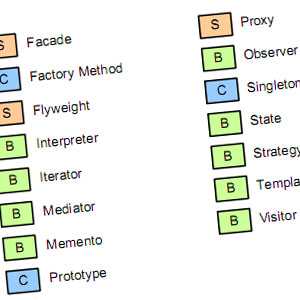
Decorator pattern
Information drawn from
This is also a structural design pattern that focuses on the ability to add behaviour or functionalities to existing classes dynamically. It is another viable alternative to sub-classing.
The decorator type behaviour is very easy to implement in JavaScript because JavaScript allows us to add methods and properties to object dynamically. The simplest approach would be to just add a property to an object, but it will not be efficiently reusable.
In this example, we create a Book class. We further create two decorator functions that accept a book object and return a “decorated” book object, giftWrap that adds one new attribute and one new function and hardbindBook that adds one new attribute and edits the value of one existing attribute.
class Book {
constructor(title, author, price) {
this._title = title;
this._author = author;
this.price = price;
}
getDetails() {
return `${this._title} by ${this._author}`;
}
}
// decorator 1
function giftWrap(book) {
book.isGiftWrapped = true;
book.unwrap = function() {
return `Unwrapped ${book.getDetails()}`;
};
return book;
}
// decorator 2
function hardbindBook(book) {
book.isHardbound = true;
book.price += 5;
return book;
}
// usage
const alchemist = giftWrap(new Book('The Alchemist', 'Paulo Coelho', 10));
console.log(alchemist.isGiftWrapped); // true
console.log(alchemist.unwrap()); // 'Unwrapped The Alchemist by Paulo Coelho'
const inferno = hardbindBook(new Book('Inferno', 'Dan Brown', 15));
console.log(inferno.isHardbound); // true
console.log(inferno.price); // 20
------------------------------------------------------------------------
Last update on 20 Feb 2020
---